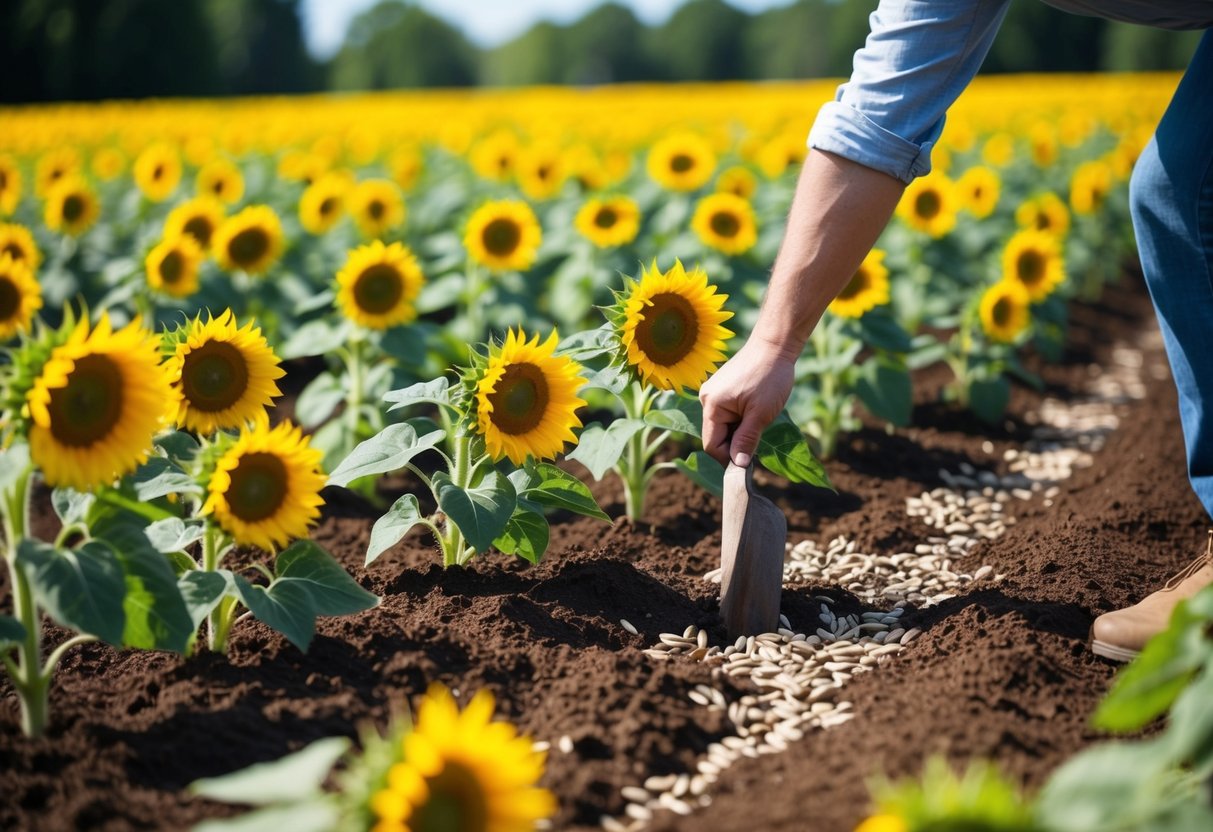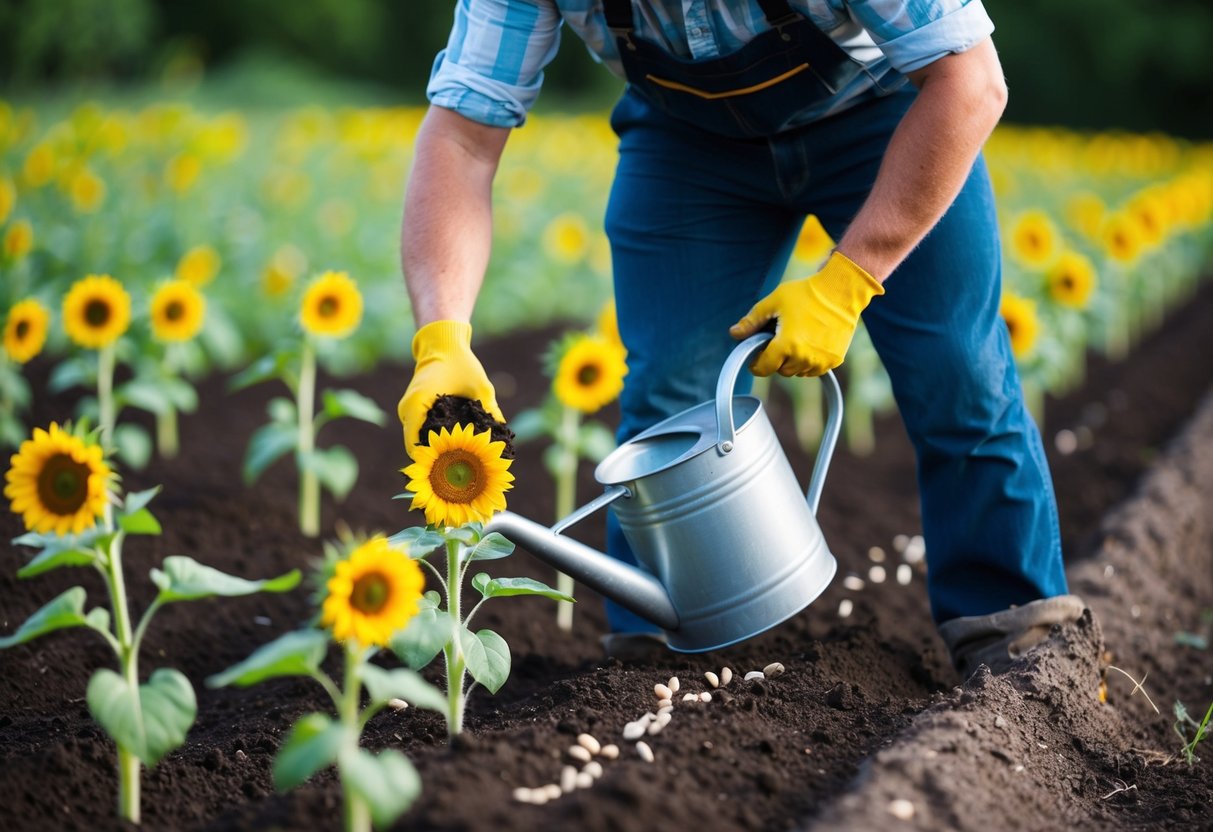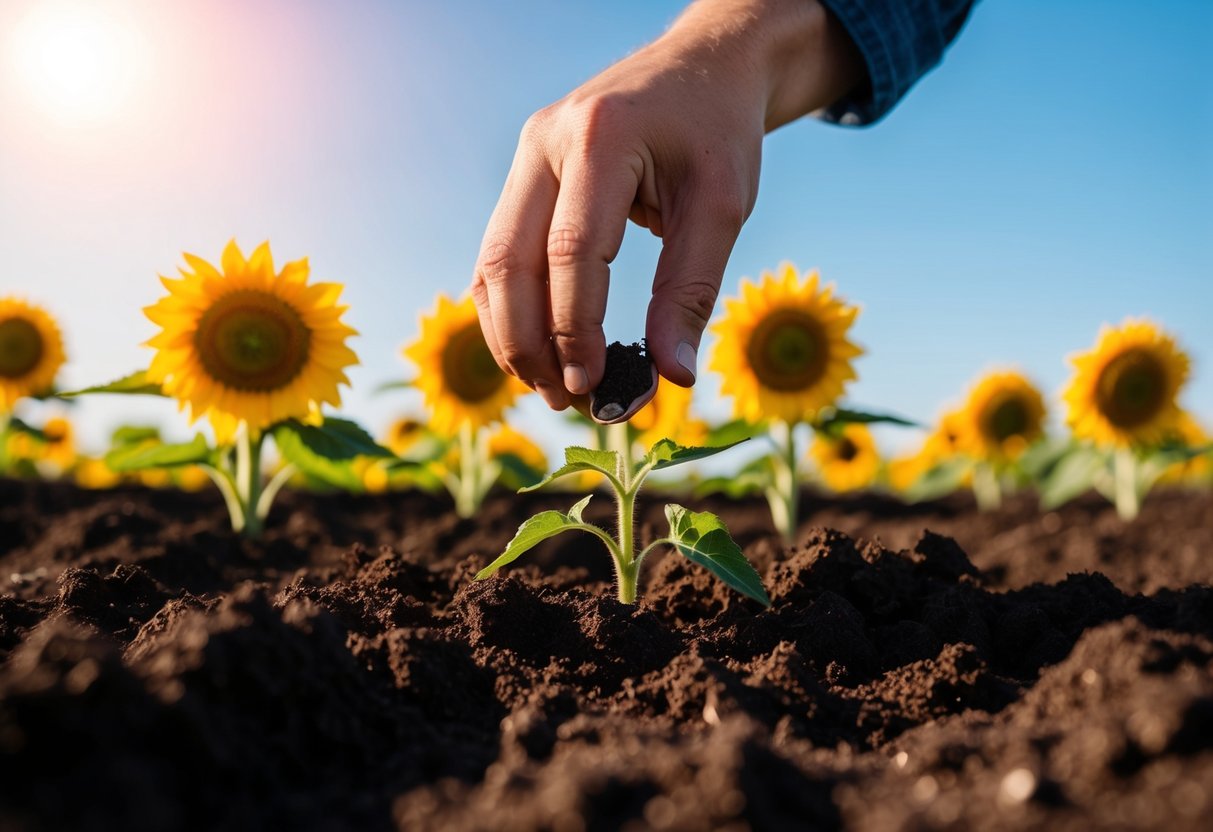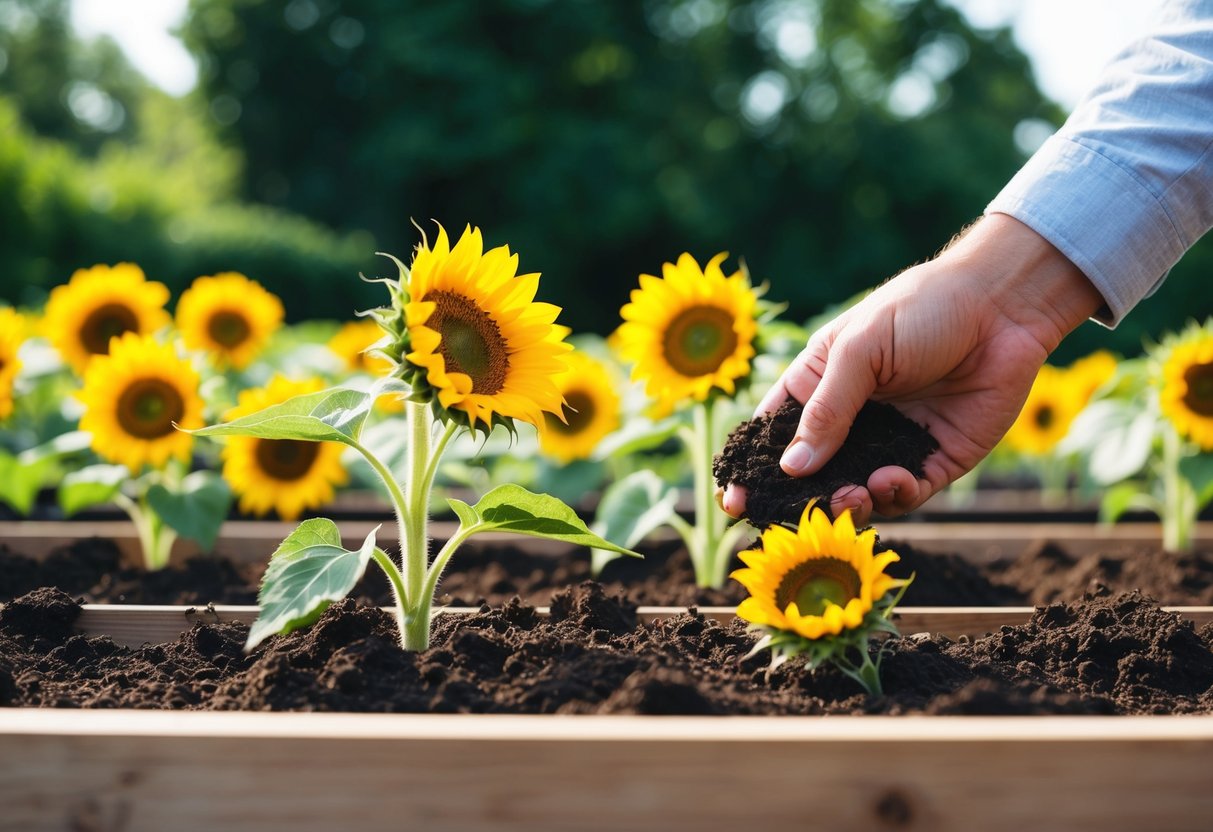When to Plant Sunflower Seeds: A Friendly Guide for Gardeners
Looking to brighten up your garden with sunflowers? These cheerful blooms not only add a splash of color but are also easy to grow. Whether you’re an expert gardener or just starting out, sunflowers can be a delightful addition.

The best time to plant sunflower seeds is when the soil has warmed to at least 55 to 60 degrees Fahrenheit, and there is no longer a threat of frost. Typically, this means planting in early to late spring, depending on your region. Choose a sunny spot in your garden, and you’ll soon see vibrant flowers reaching for the sky.
Sunflowers are versatile and come with various planting options. You can start them indoors if you’re eager to get a head start or sow them directly in your garden. Remember to give them space, about 6 inches apart, for the best growth. Whether you plant them in rows or a cluster, you’ll enjoy watching them grow tall and strong.
Selecting the Right Sunflower Variety

Choosing the best sunflower variety depends on your garden space and personal preferences. Whether you want towering blooms or compact plants, there’s a sunflower for every garden style.
Understanding Different Sunflower Types
Sunflowers come in a range of types, each with its own unique appeal. The most common is the Helianthus annuus, known for its classic yellow petals and large central disk. These sunflowers can grow several feet tall and make a bold statement in any garden.
Different varieties also offer diverse colors such as red and orange, and even sizes. Some types are specifically bred for ornamental purposes, while others are perfect for harvesting seeds. When selecting a variety, consider the climate and space available. Sunflowers thrive best in warm weather and require a spot that gets plenty of sunlight. If you’re interested in variety, explore options that differ in both height and bloom size to add interest to your garden.
Dwarf Varieties vs. Giant Sunflowers
Dwarf sunflowers generally grow to about 2-3 feet tall and are perfect for small gardens. They’re ideal for planting in containers or as borders. These varieties are low maintenance and still add a splash of color.
On the other hand, giant sunflowers can tower over their garden neighbors, reaching heights of up to 14 feet or more. They are best suited for open spaces where their size can be appreciated. Giant sunflowers are excellent as a dramatic backdrop in garden landscapes. When choosing between dwarf and giant sunflowers, think about the space in your garden and the visual impact you wish to create.
Preparation for Planting Sunflowers

Before planting sunflowers, it is important to choose the right location and prepare the soil properly. Focusing on the type of soil and the addition of organic matter will make a significant difference in how well your sunflowers grow.
Soil and Site Requirements
Picking the right spot for your sunflowers is key. Sunflowers thrive in locations with full sun, so find a place in your garden that gets sun for most of the day. The soil should be well-draining to prevent water from sitting and causing root rot.
You need good soil with a loose structure to help the roots spread. If your garden soil is heavy or clay-like, you can improve it by adding sand or perlite.
This helps with drainage and keeps the soil workable. Keeping weeds in check is also crucial, so clear the area of any existing weeds before you plant.
Organic Matter and Compost
Adding organic matter to your soil helps enrich it and support plant growth. You can use compost, well-rotted manure, or leaf mold. These materials will improve soil texture and provide nutrients for your sunflowers.
To prepare, work the compost into the top 8-12 inches of soil, ensuring it’s mixed well. This improves soil structure and aeration, allowing roots to grow freely. Regularly adding compost not only helps with drainage but also boosts soil fertility over time.
By focusing on these aspects, you’ll set a strong foundation for your sunflowers to flourish. This way, your plants will have all they need to grow tall and strong.
Sowing Sunflower Seeds

Planting sunflower seeds requires timing, spacing, and choosing whether to start indoors or outdoors. Each step can help you enjoy tall, vibrant sunflowers that brighten your garden.
Best Time to Sow
The best time to plant sunflower seeds is after the last frost date in your area. This ensures the soil is warm enough for germination. Aim for a soil temperature of at least 50 to 60°F. To find the right time, you can check your local growing zone or hardiness zone information.
In some regions, you may be able to start sowing as early as April. For others, it might be May or even June. The crucial point is to wait until the ground is no longer cold and frosty. If planted too soon, seeds might not germinate effectively.
Germinating Seeds Indoors vs. Outdoors
You can choose to germinate sunflower seeds either indoors or outdoors. If you decide on starting indoors, use seed trays with good drainage. This can give your plants a head start, especially in cooler climates. Place the trays in a sunny location and keep the soil moist but not soggy.
For a more natural approach, you can sow seeds directly into the garden soil. Ensure the frost has passed and the area has good exposure to sunlight. Outdoor planting might take longer to germinate, but it often results in stronger seedlings.
Spacing for Optimal Growth
Proper spacing of your sunflower seeds affects their growth and health. For larger varieties, space seeds about 12 to 15 inches apart. This gives them the room to branch out and develop broader flower heads. Smaller or dwarf varieties can be planted closer, around 6 to 8 inches apart.
If you’re growing in rows, keep the rows at least 2 feet apart. Make sure the planting depth is about 1 inch. Avoid planting too deep as this can lead to seed rot. With the right spacing, you’ll have robust and beautiful sunflowers gracing your garden.
Caring for Sunflowers as They Grow

Sunflowers need proper care to thrive. Focus on watering and fertilizing to ensure healthy growth. Tall varieties may require staking for support. Protect your plants from common pests and diseases to keep them blooming beautifully.
Watering and Fertilizing
Sunflowers enjoy consistent watering, especially during dry spells. Aim to water them deeply about once a week. Make sure the soil is moist but not waterlogged. This balance helps them develop strong roots.
A balanced fertilizer can also encourage healthy growth. Apply it every few weeks, but avoid over-fertilizing. Too much can lead to weak stems or fewer blooms. Look for fertilizers with equal parts nitrogen, phosphorus, and potassium. This will keep your sunflowers growing strong and healthy.
Staking and Supporting Tall Varieties
Some sunflower varieties can reach impressive heights. These tall beauties might need staking to prevent them from toppling over. Use sturdy stakes made of wood or metal.
Place the stakes about a foot away from the plant base. Tie the stems gently to the stakes with soft garden ties or strips of cloth. Be careful not to damage the stems. Provide support early on to help them grow straight and tall without hassle.
Protecting from Pests and Diseases
Sunflowers can attract pests such as slugs, snails, and sunflower moths. Regularly check your plants for these unwanted visitors. Remove slugs and snails by hand when you spot them.
To deter the sunflower moth and other pests, consider using natural repellents. Spray your plants with a homemade mix of water and soap. This can keep these pests at bay without harming the environment.
Diseases like mildew can also affect sunflowers. Ensure good air circulation by spacing your plants appropriately. Monitor your flowers often and address any issues quickly for lush, vibrant blooms.
Harvesting and Enjoying Sunflowers

Sunflowers are not just beautiful to look at; they also provide an opportunity for various uses. From cutting them for bouquets to harvesting seeds for snacks or crafts, your sunflower garden can be both lovely and practical.
When to Harvest for Cut Flowers or Seeds
Picking sunflowers at the right bloom time ensures they last longer as cut flowers. Look for blooms whose petals are just starting to open, giving you fresh and vibrant arrangements.
For harvesting seeds, wait until the sunflower heads droop and the back of the head turns brown. This means the seeds are mature. Cut the stem about an inch below the sunflower heads to prepare them for drying or immediate use.
Drying and Storing Sunflower Seeds
Once you’ve harvested the seeds, drying them properly is key. Hang the sunflower heads upside down in a warm, dry place. This helps to ensure that they dry thoroughly.
After drying, remove the seeds from the heads by rubbing them off with your hands. Store the seeds in airtight containers to keep them fresh. It’s best to label the containers with the date so you know when they were harvested.
Sunflowers in Cooking and Crafts
Sunflower seeds are not only nutritious but also a fun ingredient in your kitchen. You can roast and salt them for a tasty snack. They are also a great addition to salads, breads, and other dishes.
Beyond cooking, sunflowers have a place in crafts, especially for children. Create wreaths using the dried heads or use the seeds in art projects. This can be a fun way to teach about nature and the life cycle of plants.







